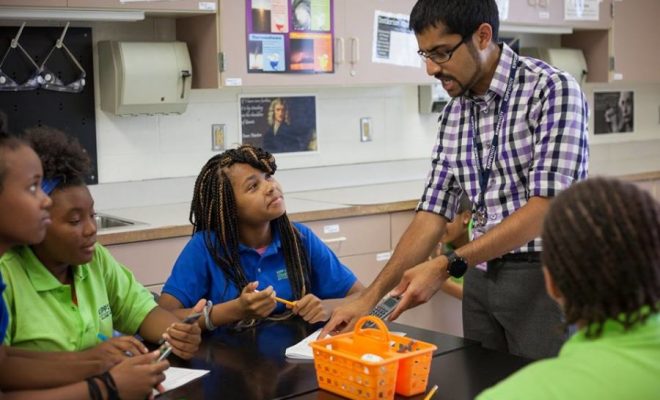Why All Assessments Should be Digital

All facets of education are being impacted by the rapid evolution of technology, and assessments are not immune. Not only should educators be able to tap into digital resources for assessment preparation, but students should be able to take assessments using the technology that makes them most comfortable. In other words, we need to ditch the Scantron forms and No. 2 pencils and give our kids access to the right technology to make them comfortable with the tests they are taking, and to streamline the process for scorers.
There is value in the handwritten word, but this generation of K-12 students will not be handing in business reports or notes scribbled with pencil on college-ruled paper. Our kids should be learning to type early on, and using the wide array of technology at their fingertips for the learning process. Assessments should reflect that shift.
To those outside the educational community, the idea that students should be able to take tests through computers and other pieces of technology that make them comfortable is a no-brainer. Yet within the educational community there is always some fretting when it comes to anything related to technology. For decades, classroom assessments have been done in quiet classrooms with individual test packets and students filling in bubbles on scan sheets with sharpened pencils. In recent years, there have been added sections for free thought that exists outside of multiple choice responses, but the tests are virtually the same as they were when many of us took our own standardized tests as K-12 students.
Changing the format of how these tests are delivered is a scary proposition for many lawmakers and administrators, and comes with a hefty price tag. When you add in the voices of educators who are leery of any technology takeovers in classrooms, it isn’t difficult to see why there is so much handwringing when it comes to updating the way that assessments are delivered. Nevertheless, it is important to find a financial way to make the technology of assessments possible.
There are several schools of thought when it comes to what kids should be learning in our K-12 schools. Some believe all activities should be focused on getting students ready for the real world and should point to career-readiness programs. Why waste time in the classroom on lofty ideas or flighty benchmarks that have no adaptation to real life? Others believe that there should be at least some inclusion of intellectual pursuits for their own sake. Not everything learned in a K-12 classroom needs a direct relationship with something in the real world that will benefit our students monetarily down the road. Some learning is simply important to developing better humans who pass along that cultural knowledge to the next generations.
It is our job to ensure students have adequate access to and mastery of the technology that will be part of their everyday lives as adults. Wherever possible, technology should be incorporated into our lesson plans and used in our classrooms because it will make a difference in how well-versed this generation of students will be across subject dividing lines.
Integrating higher levels of technology in assessments, whether the state-mandated versions or even just in-classroom ones, will have two positive results. The first is that they will reinforce students’ use of technology by asking them to implement it to take the actual tests. The second is that assessments will make more sense in the grand scheme of classroom learning, which is already much more interactive than the traditional test-taking process that is still used in standardized assessments.
Students who take tests on computers or tablets will be more comfortable with the material at hand and it will feel like they are participating in more of an integrated process. In order to remain a world leader when it comes to the fast pace of technology, educators need to insist that technology be part of not only the teaching process, but also of assessment policy.





